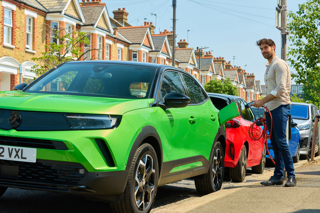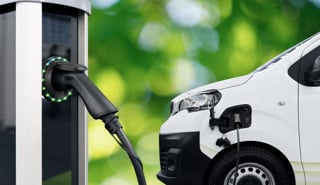
Fleet FAQ
Q:
How to get the most out of public electric vehicle (EV) charging?
A:
The fastest chargers come closest to mirroring the convenience of combustion engine vehicles, driving around and refuelling when required, but a smarter approach is to recharge when a vehicle is scheduled to be idle and not during the 10% of time when it’s being driven, said a spokesman for Pod Point.
Slower charging also helps fleet budgets, with a clear correlation between speed of charger and energy tariff.
The average price per kWh for Connected Kerb’s roadside chargers – typically 7kW-22kW – ranges from 23p-to-25p (as of 2022), whereas Instavolt costs twice as much, 50p/kWh, for its 50kW-plus DC chargers.
For fleets, the ideal scenario is to have employees charge electric vehicles (EVs) outside working hours, with the most convenient solution for drivers without a home charger (potentially as many as 70% of van drivers) being kerbside charging.
However, for charge point operators the return on investment (ROI) achieved with slow chargers is much longer than for rapid chargers that can have multiple users per day.
Forecasts by Delta-EE see the vast majority of chargers being in the 7kW-to- 22kW range in 2030, because these require cheaper hardware and are easier to install without encountering grid constraints.
“But, in order to service the increasing number of EVs on the road you will also need more high-power charging,” said a spokesman at Delta-EE.
“If you look at energy demand, 100kW-plus chargers will be utilised more often in a 24-hour period and will account for a large proportion of energy delivered to EVs in 2030.”
He adds charge point operators are currently in a race to invest in the best locations – areas with a high uptake of EVs, the best visibility to traffic and grid connections with abundant power capacity.
Among the challenges for fleets that require nationwide coverage is the uneven distribution of charge points.
Last year (2021), the Society of Motor Manufacturers and Traders (SMMT) reported that the ratio of electric cars to public chargers stood at 1:52 in the north, compared with 1:30 in the south.
The other complication is the interoperability of the different charging networks, although he is optimistic about the future, at least for rapid chargers.
“At the moment we have quite isolated networks where you need different charge cards to access the network, but it’s only a matter of time before we have a really open network with one charge card that can access a number of different networks,” he said.
*Financial information accurate as of 2022
The Fleet News Electric Vehicle Charging Point map shows every power point and electric car charging station open to EVs in the UK, detailing the networks they are part of, and any charges that are applicable.
> Interested in comparing electric vehicle data? Check out our EV tool.
> Interested in ensuring the efficient use of EVs. Check out our dedicated editorial sections: Insight & policy | EV news | Charging & infrastructure | Costs & incentives | Benefit-in-kind | EV case studies | EV road tests
> EVs by price: lowest to highest

















